The Philadelphia first ladies, “the initial members of the Drexel group, the nucleus from which grew the National Society of Women Engineers, were enthusiastic and hard working. They were determined to prove themselves in a profession dominated by men.” – AW Grosvenor
The Philadelphia first ladies are founding and/or charter members of the Society. Charter members are all women whose applications to SWE were approved in 1950. A founding member is any woman who attended the SWE Founding Meeting at Green Engineering Camp, Cooper Union, New Jersey. Thus a founding member does not have to be a charter member if she did not submit a membership application in 1950.
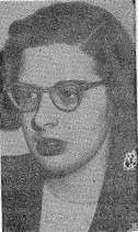
Alma Kuppinger Forman
Alma Kuppinger Forman, a SWE and Philadelphia Section Charter Member, has been a member of the Philadelphia Section since its inception. She is one of the women engineering students at the Drexel Institute of Technology, now Drexel University, who in November 1946 “organized a society to promote friendship and to help each other with problems.” In those early days when she was a senior and chairman of the SWE group, she had to go Dr. James Creese, President of the Institute, to get money to sponsor activities such as the 1949 first SWE conference. She ran against Dr. Beatrice Hicks, who became first President of the Society. During SWE’s formative years, Alma served on the National Board of Directors and the Nominating Committee, as Chair of the first Eastern Seaboard Meeting that was held in Philadelphia in March 1955, several terms as Section Chairman and editor of the section newsletter, “SWE Outlook.” In later years most of her activities centered on working with students. As an engineering professor at Temple University, Alma encouraged the women engineering students to form a SWE Student Section and she served as Faculty Advisor to the section until she retired in 1995. She continued to work with Temple’s outreach programs for another three years. In recent years Alma has provided many archival materials and other background on the genesis of the Society and the Philadelphia Section. She was named to the section’s Hall of Fame in 1990. Alma’s husband Ross encouraged her SWE activities and was one of the driving forces behind the formation of a group of SWE member spouses called the Men’s Artillery, which was a precursor to the national SWE Men’s Auxiliary.
Alma has worked in industry and academia. Her industrial experience includes positions at Peter Paul, Inc., Kuljian Corporation, the Department of the Interior, Aero Service Corporation, and consulting with Footwear Industries of America and C. W. Dustin. Her academic experience
includes lecturing at Drexel University, Montgomery County Community College, and Spring Garden College and finally as a Professor of Mechanical Engineering at Temple University; she was also Director of Computer Services for the School of Engineering and Architecture.
In 1949 Alma Kuppinger Forman became the first woman at the Drexel Institute of Technology to receive a degree in civil engineering. She is a registered Professional Engineer in Pennsylvania.
Sources:
Philadelphia Section Newsletters
1990 Hall of Fame Write Up
Polier, Rex. “Won’t Anybody Let a Girl Design Just One Tiny Bridge?” THE EVENING BULLETIN. 15 April 1951.
Personal memories – Alma Forman, Doris McNulty, Barbara C. Faust
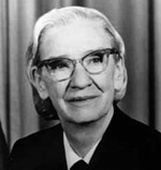
Grace Murray Hopper
Dr. Grace Murray Hopper, SWE Charter Member of the Philadelphia Section, Achievement Award winner, and Life Member, came to the Philadelphia area in 1949 when she joined the Eckert-Mauchley Corporation as a senior mathematician. She remained with the company when it was bought by Remington Rand in 1950 and later merged with the Sperry Corporation. She left the area in 1967 when she was recalled to active duty by the Navy and sent to the Washington, D.C. area. Dr. Hopper was the first Chairman of the SWE-Philadelphia Section. Throughout the years she often served as a speaker at various SWE events. In 1964 Grace Murray Hopper received the SWE Achievement Award, the Society’s highest honor, “In recognition of her significant contributions to the burgeoning computer industry as an engineering manager and originator of automatic programming systems.” She is credited with the conception of a compiling system that allows the computer to write its own program from key instructions and developed the first English language compiler that was later incorporated into the Common Business-Oriented Language (COBOL).
Grace Murray Hopper was born in New York City, but she called Wolfeboro, NH her second home. She graduated Phi Beta Kappa from Vassar College in 1928 with a BA in Mathematics and Physics. She continued her studies at Yale University where she earned two degrees in mathematics, an MA in 1930 and a Ph.D in 1934, at which time she was elected to Sigma Xi and was honored with two Sterling Scholarships. During this time, Grace also married Vincent Foster Hopper, an English instructor at the New York School of Commerce, in 1930 and she taught mathematics at Vassar College. The couple separated in the early 1940’s and were divorced in 1945, the same year he was killed in World War II. She continued to teach at Vassar until 1943 when, at the age of 34, she decided to serve her country by joining the Navy. Though considered overage and underweight for military enlistment, her position as a mathematics professor was declared critical to the war effort. Navy officials asked her to remain a civilian, but she obtained a waiver for the weight requirement, special government permission, and a leave of absence from Vassar, and was sworn into the U.S. Naval Reserve in December 1943. She trained at the Midshipmen’s School for Women and graduated first in her class.
Her first assignment was to the Bureau of Ordnance Computation Project at Harvard University as a programmer for the Mark I, the world’s first large scale digital computer. She also worked on the successor Mark II and Mark III computers. In 1946 she received the Naval Ordnance Development Award for her work on the Mark series. That year, at the age of 40, she was told that she was too old to remain in active service and was released from active duty in 1946. She then joined the Harvard Faculty at the Computation Laboratory and continued work on the Mark II and Mark III machines. One day during work on the Mark II, she and her programmers found a moth that had flown through an open window and into one of the computer’s relays, temporarily shutting down the system. Although some credit her with coining the term “bug” to refer to a glitch in machinery, the term had already been in use by Harvard personnel to describe problems with their computers. In the mid 1950s, Grace Hopper extended the meaning of the term “debug” to include removing programming errors.
In 1949 she left Harvard to join the Eckert-Mauchly Computer Corporation, which was building UNIVAC I and remained there when it was absorbed by Remington Rand and later Sperry Corporation. Despite ridicule from her peers at the suggestion that UNIVAC could be programmed to recognize English commands, she succeeded in developing the B-0 compiler, later known as FLOW-MATIC, which could be used for typical business tacks such as payroll calculation and automated billing. This language was used as a foundation for creating the standard manuals and tools for COBOL.
Although her age forced her to retire from the Naval Reserves in 1966, she was recalled to active duty at the Naval Data Automation Command in Washington, D.C., less than seven months later because the Navy was unable to develop a working payroll plan after 823 attempts and she was needed to help standardize the high-level computer languages.
This reinstatement made her the first woman to return to active duty. Although her original re-appointment was for only six months, it was later extended indefinitely. By special Presidential Appointment in November 1983, Grace Hopper was promoted to the rank of Commodore [Rear Admiral (lower half)]. In September 1986 at the age of 80, Rear Admiral Grace Murray Hopper retired from the Navy with a ceremony held in her honor in Boston aboard the USS Constitution. At this ceremony, she was also presented with a silicon chip on a ribbon signifying her induction as First Fellow of the Computer Museum by Dr. Gwen Bell and Navy Secretary, the Honorable John F. Lehman, Jr., presented her with the Distinguished Service Medal, the highest award given by the Department of Defense. In her honor, the Navy also named an Aegis Destroyer as The Amazing Grace.
After her retirement in 1986, she became a Senior Consultant to Digital Equipment Corporation and was active until about 18 months before she passed away in 1992. She was born on December 9, 1906 and had dreamed of living to the end of the century at the age of 94, but she was eight years short of the new century. She died on January 1, 1992 and was buried at Arlington National Cemetery with full military honors.
Sources:
“RADM Hopper Retires.” U.S. WOMAN ENGINEER. November/December 1986.
1991 National Medal of Technology Citation
Obituaries
“Biographies of Women Mathematicians Grace Murray Hopper,” http://www.agnesscott.edu/LRIDDLE/WOMEN/hopper.htm
“Biographies in Naval History – Rear Admiral Grace Murray Hopper, USN,” Link no longer working New Navy bio link
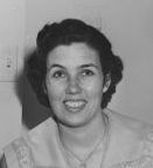
Doris M. McNulty
Doris M. McNulty, SWE Founding Member and Charter Member of the Philadelphia Section, was very active in the section from its earliest days through 1977 when her work took her out of the United States for about a decade. She is one of the women engineering students at the Drexel Institute of Technology (now Drexel University) who met during 1948 to socialize with other women engineers and students, many of whom were evening school students. She served in most section offices, including several terms as Chairman, Treasurer, Section representative, and head of various committees during the 1950s until she left the area in the 1970s. She was also active at the national level on the Board of Directors (1952-1954) and as an editor of the national newsletter, Journal of SWE, – the first few issues were published from her home in Philadelphia. Since her retirement in 1992, she rejoined the Philadelphia Section and has served as a valued source of information on the beginnings of SWE and early local customs such as the SWE bracelet and fines for not wearing your SWE pin to meetings. Doris became a registered Professional Engineer in 1961. She was named to the Philadelphia Section Hall of Fame in 2009.
Doris McNulty began her electrical engineering studies at Drexel as a day student shortly after the end of World War II. After two years she dropped out of college for financial reasons and went to work for General Electric as a draftsman. Several years later she returned to Drexel, graduated with a technical diploma in 1957, and received her degree in 1958. The Philadelphia Inquirer ran a seven-column spread about her in the Sunday Edition of the paper when the Engineers’ Club of Philadelphia honored her during Engineers’ Week in 1972.
During her working career Doris was a designer for a sub-contractor for Westinghouse Steam Turbines, an engineer for Electric Boat in Groton, CT, and both a designer and engineer during her 35-year tenure at United Engineers & Constructors, now part of the Washington Group. From 1977 to 1979 she was Site Engineer during the construction of the Point Lepreau nuclear power plant in Canada. From then through June 1987 she worked in Italy as a consultant to an engineering effort to develop a standard power plant that could be built on any site. In 1992 she retired as a consulting instrumentation and controls engineer for the company’s Power Division.
Sources:
“Drexel Women in Engineering Celebrate 50 Years of Accomplishment.” DREXEL MAGAZINE. Summer 1999: 4-5.
McNulty, Doris “SWE’s 50th Anniversary: Reflections on the Early Days.” THE OUTLOOK. March 2000.
Journal of SWE, Spring 1951, Sept 1951, Jan 1952, March 1952, June 1952, June 1952, Sept 1952, Mar 1953
Personal memories and interviews – Doris M. McNulty, Alma K. Forman, Barbara C. Faust
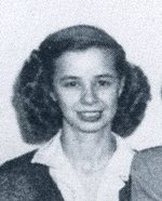
Phyllis “Sandy” Evans Miller
Phyllis “Sandy” Evans Miller, SWE Founding Member and Charter Member of the Philadelphia Section, was active in the section from the time she was a student at the Drexel Institute of Technology, now Drexel University, in 1946 until she moved to Pittsburgh, PA, after receiving her degree and relocating for a new job. She helped to found the Pittsburgh Section in 1952 and became its first Chairman. While at Drexel, she served as Vice President of the section when it hosted the SWE 1949 Convention and in 1949-1950 as President of the regional Society of Women Engineers that consisted of five undergraduate and two graduate sections at the time. From 1950 to 1952 she served as National Corresponding Secretary during her transition from Philadelphia to Pittsburgh.
Phyllis grew up in southeastern Pennsylvania. She graduated from Lower Merion Senior High School, Ardmore, PA in 1945 and then continued her education by attending Drexel Institute of Technology to study Mechanical Engineering. She received her B.S. degree in 1950.
While at Drexel, she participated in their cooperative education program and was able to have three work experiences. In 1947, as a Physical Tester for G. & W. H. Corson Co., she performed physical and chemical tests on lime and lime products. In 1948, as an Engineer Trainee, she drafted rocket and allied equipment. In 1949, as an Engineer Trainee at the Frankford Arsenal in Philadelphia, she drafted equipment to control guns and rangefinders and took part in the drafting, design and lab testing of fire control equipment.
After graduating from Drexel, she worked as a draftsman / junior engineer at the Westinghouse Electric Company Atomic Power Division near Pittsburgh, PA. She performed structural engineering tasks, structural design and stress analysis on a nuclear reactor for use on submarines. In 1952 she started work at Bloom Engineering Company in Pittsburgh as a mechanical engineer reporting directly to the company president. She assisted the sales department in their endeavor to sell burner equipment to steel mills. She created technical graphics to show necessary furnace temperatures and times required to heat steel to the desires temperature. Her heat transfer research and calculations aided in the design of furnaces for open-hearth steel mills.
Her hobbies included remodeling a 100 year old farm house, knitting, crocheting, gardening, hooking rugs, reading about and testing self-made model rocket motors, antiques, square dancing, and doing church work. But most importantly, she was a tireless proponent of women’s rights. Phyllis Evans Miller died in 1982.
Sources:
SWE Archives – Member Application
SWE Archives – Draft Resume
Women Can be Engineers Speech at the COE University of Illinois, Urbana. 27 October 1962.
“Sandy Evans is Pres. of Women Engineers.” THE TRIANGLE. 22 April 1949.
Philadelphia Section Newsletters
PITTSBURGH POST GAZETTE, Obituary for William E. Miller, Jr., January 8, 1996
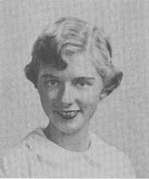
Eleanor Greiner
Described as pint-sized and blonde, Eleanor Greiner Gabriel was a SWE Founding Member of the Philadelphia Section. She was one of the under graduate engineers who joined with the women engineering students to develop the SWE organization begun by students at the Drexel Institute of Technology, now Drexel University, in the mid 1940s. After the Society was charted in 1950, Eleanor remained active with the Drexel section as Vice President and Assistant Corresponding Secretary of the Philadelphia District.
A 1946 graduate of Philadelphia High School for Girls, Eleanor decided she wanted to become an engineer when Betty MacFadden Jay came and spoke to the school about being a mechanical engineer. Eleanor graduated at the head of her class from Drexel Institute of Technology in 1951 with a B.S. in Chemical Engineering. During her co-ops she worked for the American Viscose Corporation, Sun Oil Company, and the Navy Yard. After graduating she continued to work for Sun Oil Company. Eleanor felt that as a woman engineer she didn’t have any difficulty finding work.
During her years at Drexel, Eleanor was also involved with Woman’s Badge Tau Beta Pi, American Institute of Chemical Engineers (AIChE), Sigma Sigma Sigma, and the Federation of Engineers. Eleanor’s favorite hobbies were ballet dancing and playing the piano.
Sources:
THE LEXARD, Drexel Yearbook, 1950 and 1951.
Rabbitt, Kay. “She Proves Skill in Man’s Realm.” THE SUNDAY BULLETIN. May 1951.
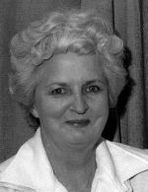
Ruby Singleton Langford
Ruby Singleton Langford, SWE Founding Member, Charter Member of the Philadelphia Section, and a Life Member, moved to Philadelphia in 1948 from Florida and was very active in the section until she moved to New York City in 1952. She attended Drexel Evening College to study electrical engineering while she was working full time as a draftsman. She was Assistant Editor and Art Editor of the early editions of the Section Newsletter. She also served in the office of Corresponding Secretary in 1951. The original SWE logo and the “OUTLOOK” masthead for the Section newsletter were designed by Ruby.
After moving to New York, she held many offices in the New York Section and chaired the 1964 SWE National Convention that was held in New York. In later years, she never forgot her southern roots and remained active in the Western Carolina and Florida Sections even though she lived in the northeastern region of the United States.
Ruby grew up in the southeastern part of the United States in the mid 1920’s to 1930’s. She graduated from Mooresville, N.C. High School, then graduated from Jacksonville, FL Vocational School, and back to Charlotte, NC to attend the N.Y.A. Technical School. Her training as a metal smith was complete in 1942 when she was almost 17 years of age. After her schooling she went to work at a succession of four companies in the Jacksonville, FL area but never stayed more than a few years at each.
At Merrill-Stevens Dry Dock & Repair Co., she worked as a metal smith (layout, assembly, welding, riveting) and then as a drafting room clerk. At Miller Electric Co. Electrical Contractors, she did marine electrical work such as drafting, tracing, cataloging and blueprint filing. Reynolds, Smith & Hills, Architects & Engineers hired her to do drafting tasks such as catalog files, perform calculations, “map work” and commercial illustrations for publication.
In 1948, Ruby moved to Philadelphia, PA and worked for George A. Gieseke, C.E., where she utilized her drafting skills. By 1951, she had the title of First Class Draftsman at the Catalytic Construction Co. In 1952, she relocated once again, this time to New York City where she worked for an engineering and construction firm. In NYC, she attended Columbia University, majored in Industrial Engineering, and received her B. S. degree in 1956. It was at Columbia University that she received an award for the best freshman English paper from Tau Beta Pi, the Engineering Honorary Society. After receiving her degree, she was hired by a Norwalk, Connecticut company: Burndy Corporation’s Utility-Industrial Division, where she worked as a technical service engineer.
Ruby met and married her husband while living in the New York area. She was also an associate member of the Institute of Industrial Engineers.
Sources:
SWE Archives – Member Application and Resume
“In Memory.” SWE MAGAZINE. March/April 1994.
“Burndy Uses ‘Womanpower To Ease Engineer Shortage.” HOUR, a company publication. 1957.
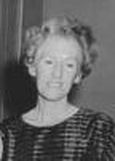
Ruth E. Kern
Ruth E. Kern, SWE Founding Member and Charter Member of the Philadelphia Section, was one of the “graduate” engineers who joined with the women engineering students to develop the SWE organization begun by students at the Drexel Institute of Technology, now Drexel University, in the mid 1940s. She was an active member and held multiple officer positions throughout the 1950s – two years as Recording Secretary, two years as Treasurer, one term as Corresponding Secretary, and one term as Statistics Chair.
Ruth graduated from Swarthmore College 1928 with a B.A. with Honors in mathematics. She then continued at the school to receive a B.S. in Electrical Engineering in 1932. She joined the General Electric Company in May 1934 and worked in Schenectady, NY at the Research Laboratory until 1941 when she transferred to the Switchgear Department in Philadelphia and met Doris McNulty. She retired from in January 1972 after 37 years with the company. While she was an Air Circuit Breaker Section Engineer at Switchgear, she received a patent for an “improved, interchangeable, inverse time-delay-tripping unit for the thermal air circuit breakers.”
Ruth was also a Sigma Xi Associate and Member of the American Institute of Electrical Engineers. Sometime after retiring she moved to California and was a member of the SWE-Santa Clara Valley Section in 1987. She is now deceased.
Sources:
SWE Archives – Membership Application
Philadelphia Section Newsletter – NONAME – YET! and THE OUTLOOK
“Bios of Swarthmore Women Engineers,” Kasia Doziol-Dube, http://fubini.swarthmore.edu/~WS30/kasia/index.htm
Personal memories – Doris McNulty

